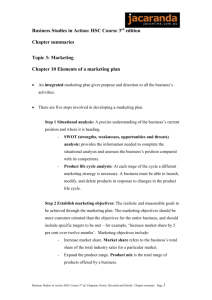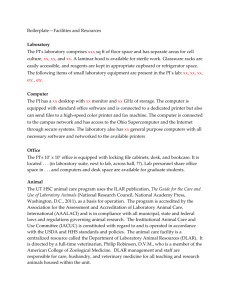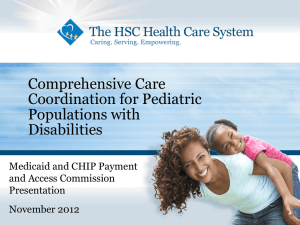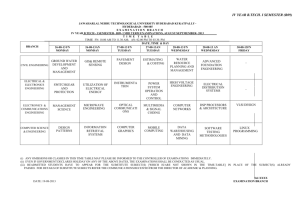[Applicants should use the "General" paragraph and all species
advertisement
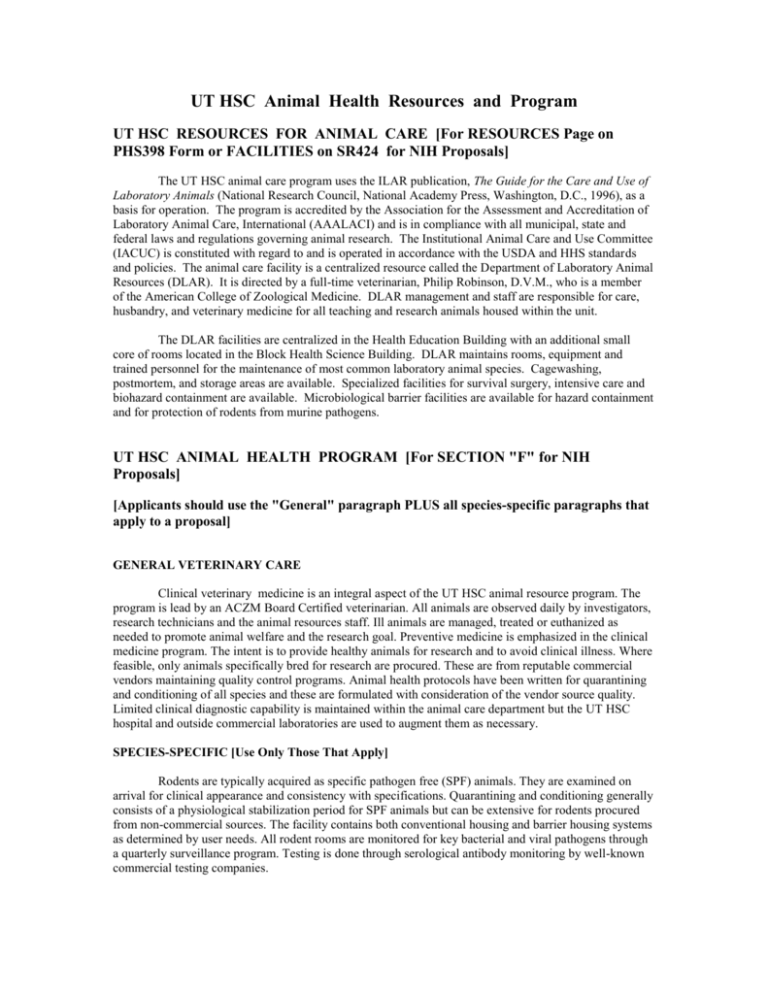
UT HSC Animal Health Resources and Program UT HSC RESOURCES FOR ANIMAL CARE [For RESOURCES Page on PHS398 Form or FACILITIES on SR424 for NIH Proposals] The UT HSC animal care program uses the ILAR publication, The Guide for the Care and Use of Laboratory Animals (National Research Council, National Academy Press, Washington, D.C., 1996), as a basis for operation. The program is accredited by the Association for the Assessment and Accreditation of Laboratory Animal Care, International (AAALACI) and is in compliance with all municipal, state and federal laws and regulations governing animal research. The Institutional Animal Care and Use Committee (IACUC) is constituted with regard to and is operated in accordance with the USDA and HHS standards and policies. The animal care facility is a centralized resource called the Department of Laboratory Animal Resources (DLAR). It is directed by a full-time veterinarian, Philip Robinson, D.V.M., who is a member of the American College of Zoological Medicine. DLAR management and staff are responsible for care, husbandry, and veterinary medicine for all teaching and research animals housed within the unit. The DLAR facilities are centralized in the Health Education Building with an additional small core of rooms located in the Block Health Science Building. DLAR maintains rooms, equipment and trained personnel for the maintenance of most common laboratory animal species. Cagewashing, postmortem, and storage areas are available. Specialized facilities for survival surgery, intensive care and biohazard containment are available. Microbiological barrier facilities are available for hazard containment and for protection of rodents from murine pathogens. UT HSC ANIMAL HEALTH PROGRAM [For SECTION "F" for NIH Proposals] [Applicants should use the "General" paragraph PLUS all species-specific paragraphs that apply to a proposal] GENERAL VETERINARY CARE Clinical veterinary medicine is an integral aspect of the UT HSC animal resource program. The program is lead by an ACZM Board Certified veterinarian. All animals are observed daily by investigators, research technicians and the animal resources staff. Ill animals are managed, treated or euthanized as needed to promote animal welfare and the research goal. Preventive medicine is emphasized in the clinical medicine program. The intent is to provide healthy animals for research and to avoid clinical illness. Where feasible, only animals specifically bred for research are procured. These are from reputable commercial vendors maintaining quality control programs. Animal health protocols have been written for quarantining and conditioning of all species and these are formulated with consideration of the vendor source quality. Limited clinical diagnostic capability is maintained within the animal care department but the UT HSC hospital and outside commercial laboratories are used to augment them as necessary. SPECIES-SPECIFIC [Use Only Those That Apply] Rodents are typically acquired as specific pathogen free (SPF) animals. They are examined on arrival for clinical appearance and consistency with specifications. Quarantining and conditioning generally consists of a physiological stabilization period for SPF animals but can be extensive for rodents procured from non-commercial sources. The facility contains both conventional housing and barrier housing systems as determined by user needs. All rodent rooms are monitored for key bacterial and viral pathogens through a quarterly surveillance program. Testing is done through serological antibody monitoring by well-known commercial testing companies. Rabbits are acquired as specific pathogen free (e.g. Pasteurella) animals. They are examined on arrival for clinical appearance and consistency with specifications. All rabbits have individual medical records and are entered into a routine health maintenance program of frequent physical examinations and treatments (e.g. toenail clipping). Pigs are acquired from a commercial producer. The producer is a small operator of a farrow to finish operation with a routine preventative health program. The herd is free of all major swine pathogens. The pigs are examined on arrival for clinical appearance and consistency with specifications and entered into a routine health maintenance program. Quarantining and conditioning generally consists of a physiological stabilization period as appropriate for the intended research. Cats are acquired from specific pathogen free USDA Class A Dealers when feasible. They are examined on arrival for clinical appearance and consistency with specifications. All cats have individual medical records and are entered into a routine health maintenance program of frequent physical examinations and treatments. Quarantining and conditioning generally consists of a physiological stabilization period as appropriate for the intended research. Dogs are acquired from specific pathogen free USDA Class A Dealers when feasible. Animals of some specific specifications are not available from Class A Dealers in which case they are acquired as conditioned animals from Class B Dealers. They are examined on arrival for clinical appearance and consistency with specifications. All dogs have individual medical records and are entered into a routine health maintenance program of frequent physical examinations and treatments. Quarantining and conditioning generally consists of a physiological stabilization period of at least 2 weeks where parasitic examinations and treatments are performed and vaccinations administered. Primates are acquired from specific pathogen free (SPF) sources when feasible. Animals of some specific specifications are not available from SPF sources in which case they are acquired and conditioned as necessary. They are examined on arrival for clinical appearance and consistency with specifications. All primates have individual medical records and are entered into a routine health maintenance program of frequent physical examinations and treatments. Quarantining and conditioning generally consists of a physiological stabilization period of at least 3 weeks where parasitic examinations and treatments are performed and tuberculosis testing is done. rdw s:\regcompl\iac\UT HSC_animal_care.doc


